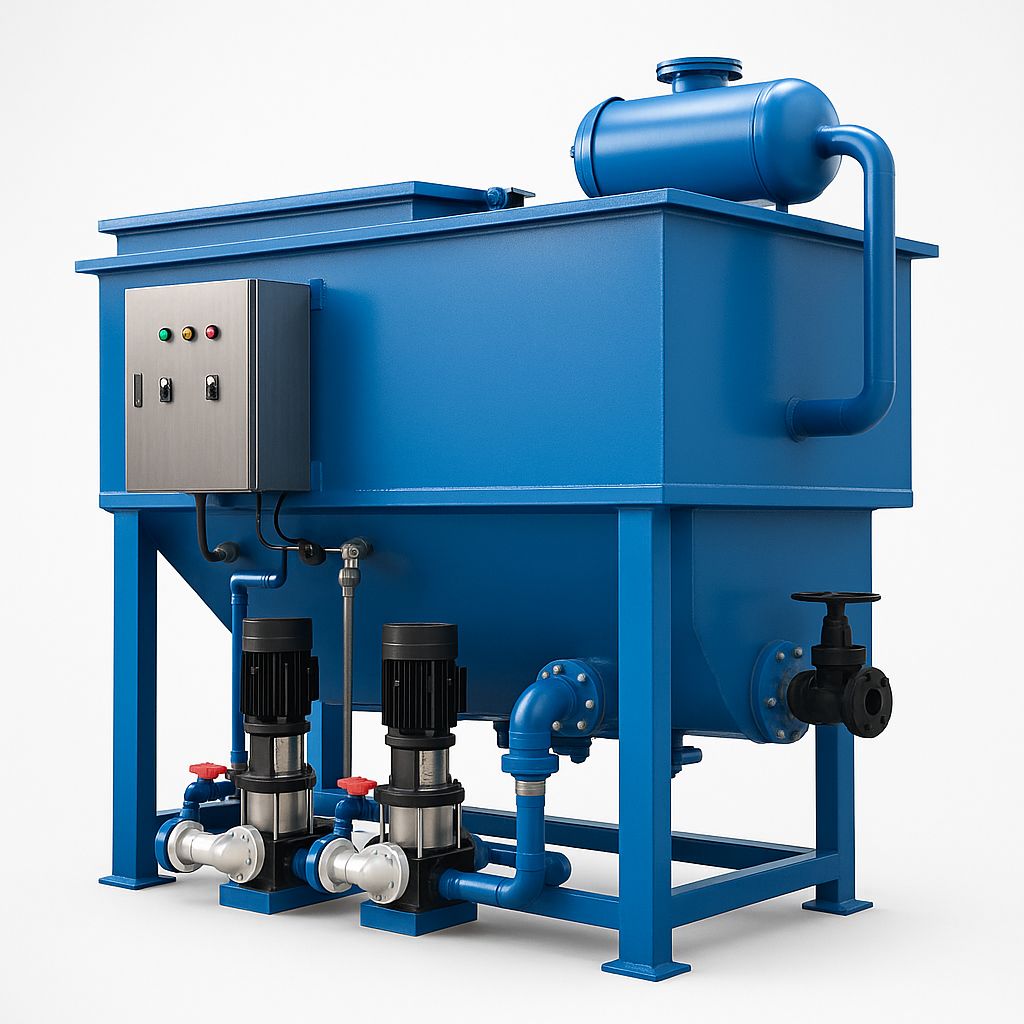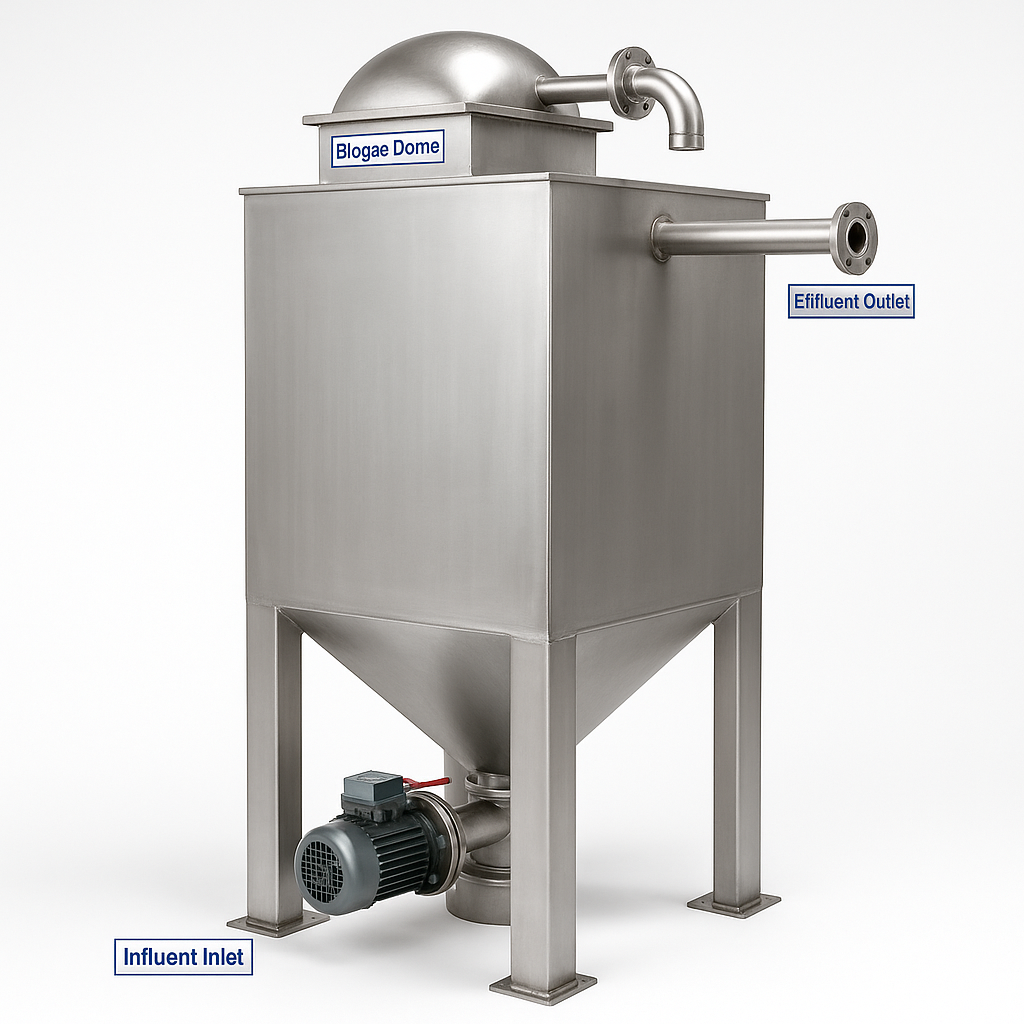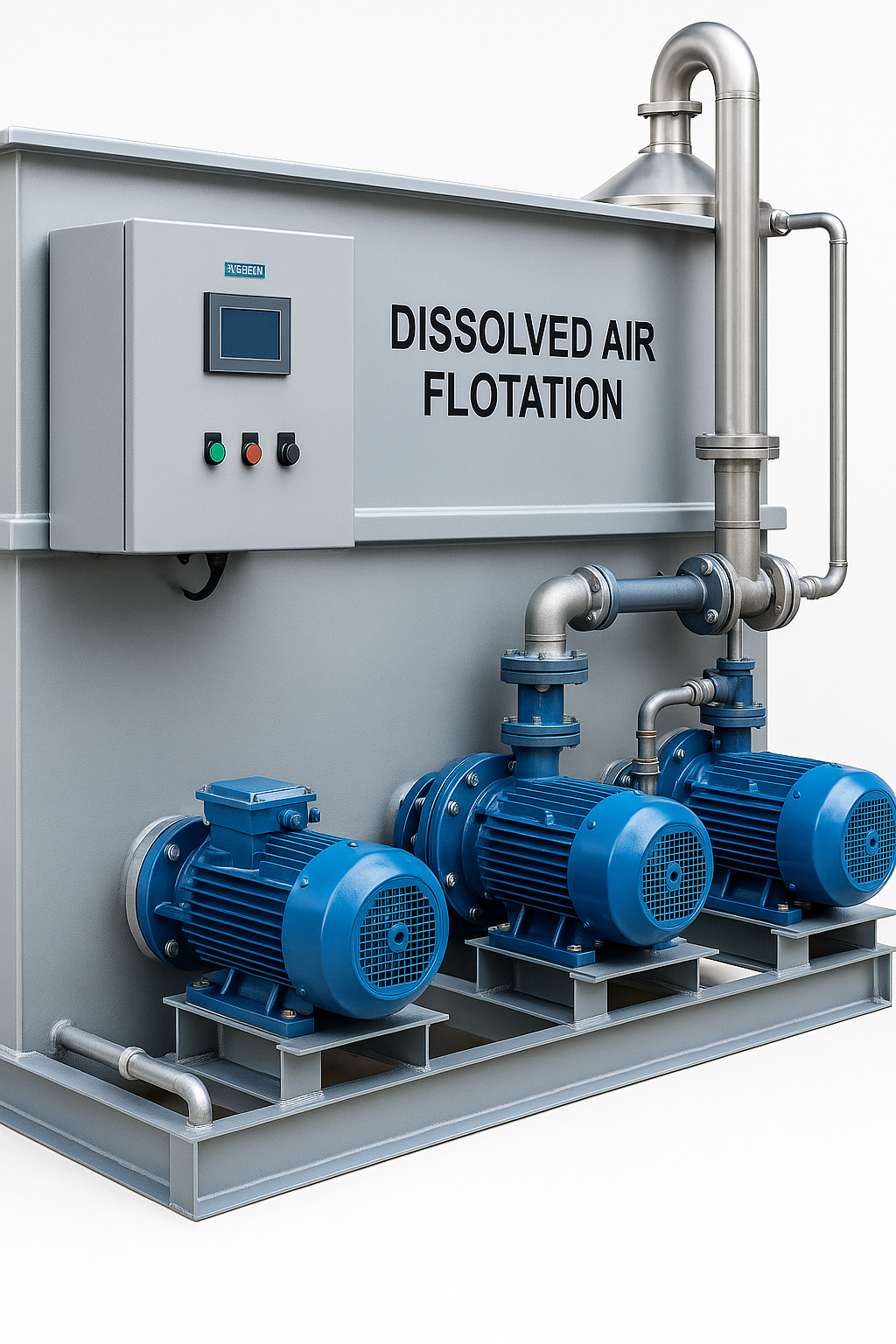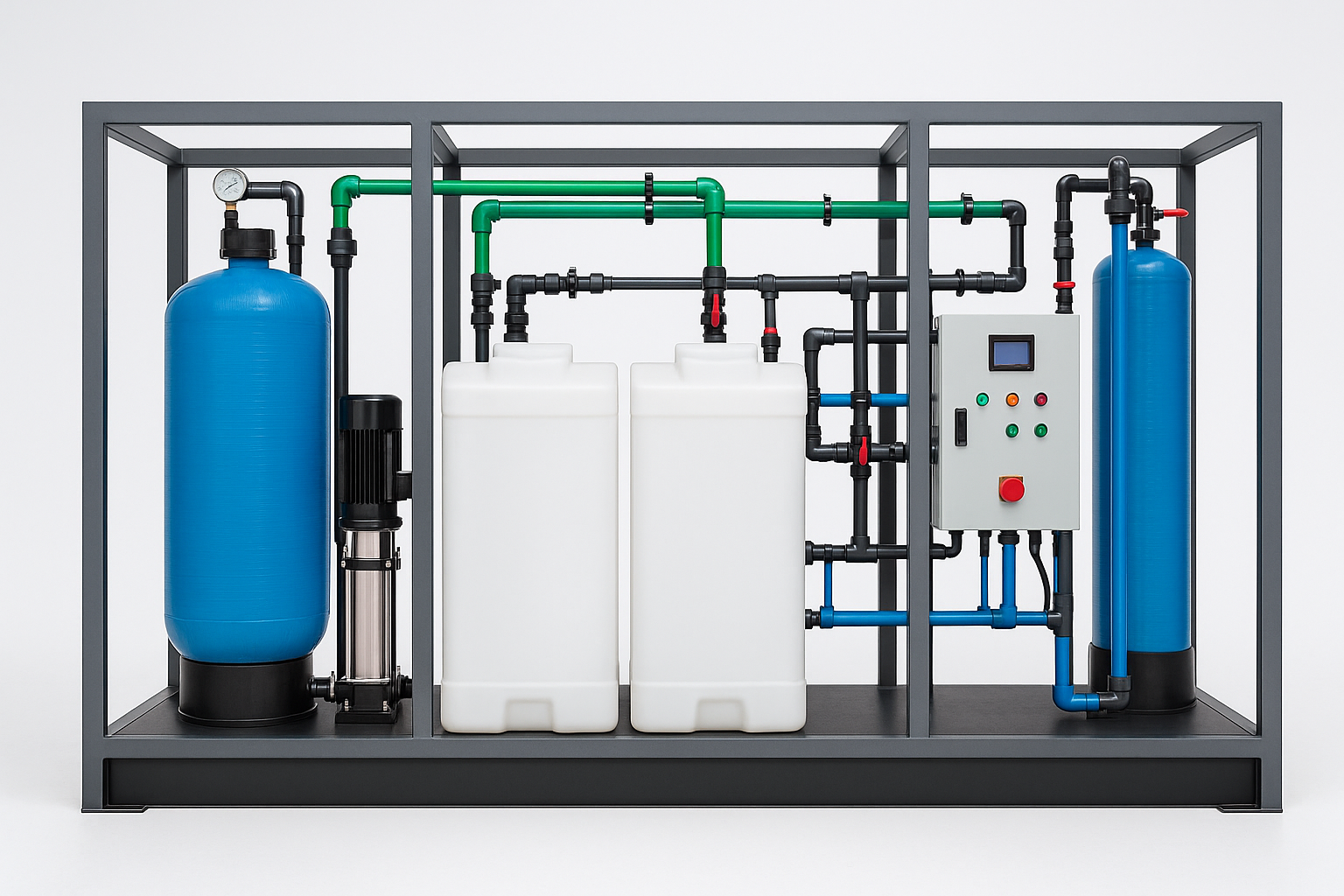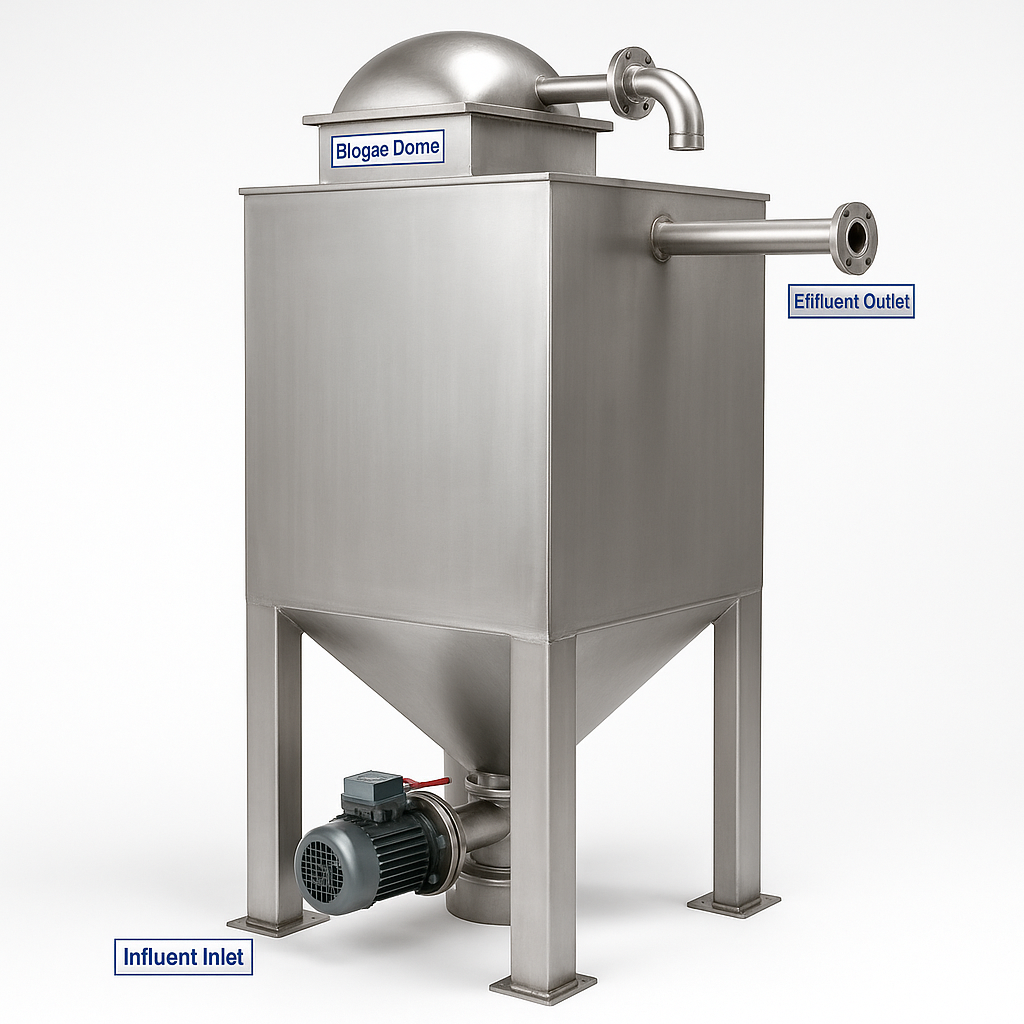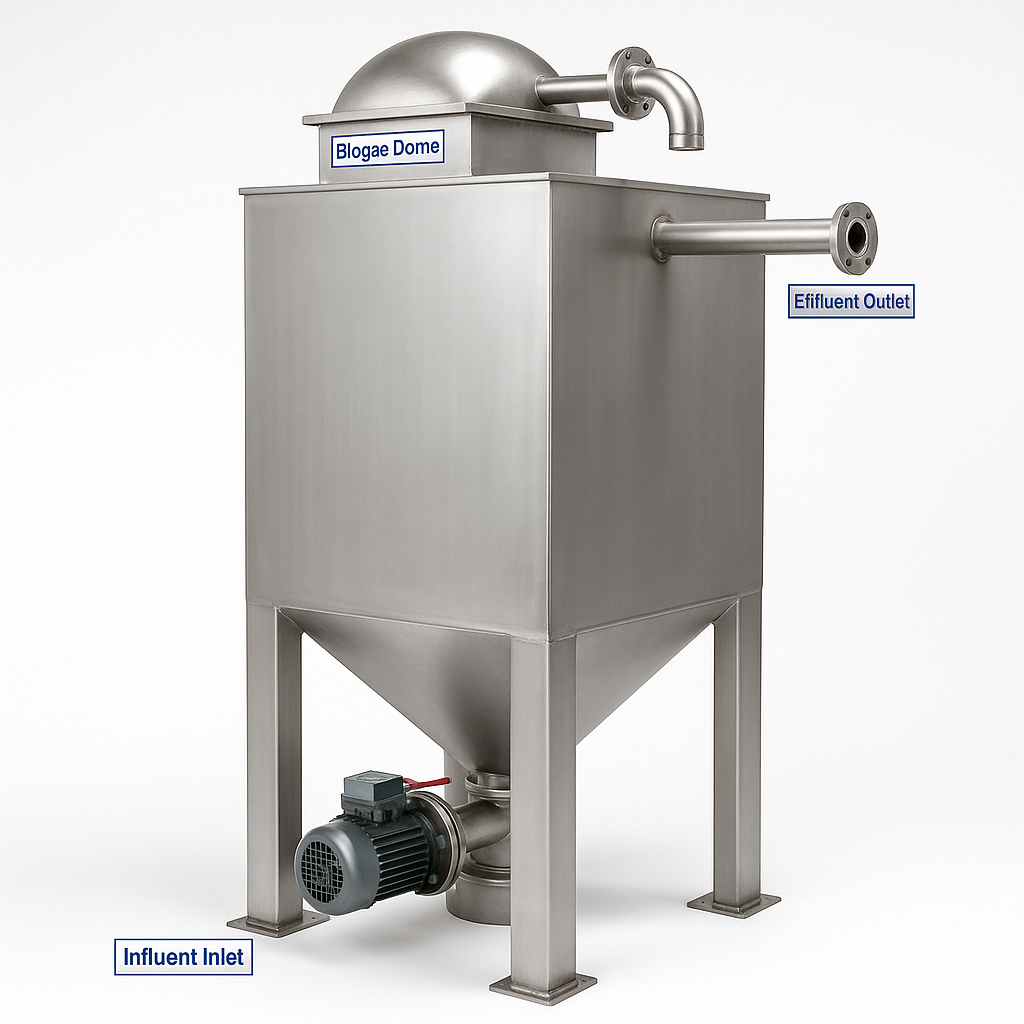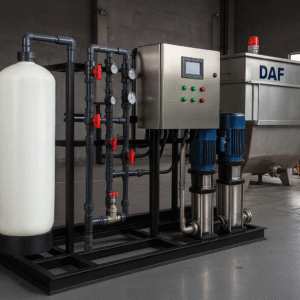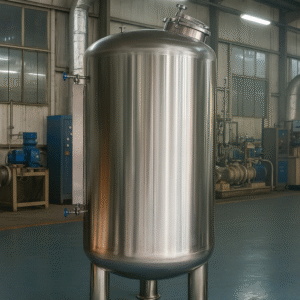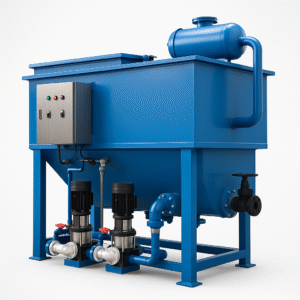
STARK UASB Réacteur anaérobie pour le traitement des eaux usées industrielles
Optimize organic pollutant removal and energy recovery in industrial wastewater treatment with Stark Water’s STARK UASB Anaerobic Reactor. This efficient UASB reactor provides high-rate anaerobic digestion, converting organic load into valuable biogas while significantly purifying industrial effluents with a compact footprint.
Description du produit
Managing high-strength organic wastewater from industrial processes presents significant environmental and operational challenges. Traditional aerobic treatment methods can be energy-intensive and require large footprints. The Stark Water STARK UASB Anaerobic Reactor offers a cutting-edge and sustainable solution, efficiently treating industrial effluents while simultaneously generating renewable energy. This advanced biological reactor is designed for high-rate organic pollutant removal, making it an ideal choice for various industrial wastewater treatment applications.
The Efficiency of a UASB Reactor for Industrial Wastewater Treatment
Our UASB (Upflow Anaerobic Sludge Blanket) reactor is a leading technology for high-rate anaerobic digestion, particularly effective for industrial wastewater treatment characterized by high organic concentrations (high BOD/COD). The core principle of a UASB reactor involves wastewater flowing upwards through a blanket of anaerobic granular sludge, which is a highly concentrated biomass containing a consortium of anaerobic microorganisms. As the wastewater passes through this dense blanket, the microorganisms efficiently break down organic pollutants in the absence of oxygen. The key advantages of this process are:
- Biogas Production: A significant portion of the organic load is converted into biogas (primarily methane and carbon dioxide), a valuable renewable energy source that can be captured and utilized, reducing operational costs and carbon footprint.
- High Organic Loading Rates: Capable of handling very high concentrations of organic pollutants, leading to smaller reactor volumes compared to conventional anaerobic systems.
- Low Energy Consumption: Unlike aerobic systems that require aeration, UASB reactors consume very little energy, further contributing to operational savings.
- Low Sludge Production: Anaerobic digestion generates significantly less excess sludge compared to aerobic processes, reducing sludge handling and disposal costs.
This efficient biological process minimizes environmental impact while generating economic benefits for industrial facilities.
Robust Design and Reliable Performance for Diverse Industrial Effluents
The STARK UASB Anaerobic Reactor is built for long-term reliability and stable performance in demanding industrial environments. Key design features ensure optimal efficiency:
- Granular Sludge Retention: The reactor’s internal design facilitates the formation and retention of dense, highly active anaerobic granular sludge, which is crucial for efficient treatment and resistance to shock loads.
- Three-Phase Separator (Gas/Solid/Liquid): An integrated system at the top of the reactor efficiently separates the generated biogas, treated effluent, and sludge, preventing washout of the valuable biomass.
- Construction durable : Constructed from robust materials (e.g., concrete, stainless steel, or FRP-lined steel), ensuring integrity and longevity against corrosive industrial wastewater components.
- Automated Monitoring: Equipped with intelligent controls for monitoring pH, temperature, flow rates, and gas production, ensuring stable operation and optimal conditions for microbial activity.
This robust and optimized design makes the UASB reactor a highly dependable solution for industrial wastewater treatment plants, consistently meeting discharge limits and supporting sustainability goals.
Sustainable Wastewater Management and Resource Recovery
Implementing the STARK UASB Anaerobic Reactor signifies a commitment to sustainable wastewater management. Beyond effectively purifying industrial effluents, the system’s ability to produce biogas transforms waste into a valuable energy resource, contributing to operational independence and a reduced carbon footprint. Its low energy consumption and minimal sludge production further enhance its environmental profile, making it a responsible and economically beneficial choice for industries seeking advanced and sustainable wastewater treatment solutions.
Paramètres du produit
Stark Water’s STARK UASB Anaerobic Reactor is engineered for high-rate organic pollutant removal and biogas production in industrial wastewater treatment. Here are its key technical specifications:
| Paramètres | Spécifications / Options de personnalisation |
|---|---|
| Concentration sur les mots-clés essentiels | UASB reactor design and capabilities. |
| Reactor Type | Upflow Anaerobic Sludge Blanket (UASB) Reactor. |
| Application | High-rate biological treatment for Industrial Wastewater (high BOD/COD). |
| Capacity (Hydraulic Loading Rate) | Customizable based on wastewater flow (e.g., from 10 m³/day to 5000+ m³/day). |
| Organic Loading Rate (OLR) | Typically 5 – 20 kg COD/m³·day (kilograms of Chemical Oxygen Demand per cubic meter per day). Higher OLR for specific industrial wastewaters. |
| COD Removal Efficiency | Typically 80% – 90% for influent COD > 2,000 mg/L. |
| Biogas Production | 0.2 – 0.5 m³ biogas/kg COD removed (biogas composition typically 50-70% methane). Custom capture and utilization systems available. |
| Reactor Material | Reinforced Concrete (for large scale), Carbon Steel (epoxy coated), Stainless Steel (SUS304/316L) or FRP-lined Steel. Selected based on wastewater characteristics. |
| Température de fonctionnement | Mesophilic range: 30°C – 40°C (optimal around 35°C). Thermophilic range (optional): 50°C – 60°C. |
| pH Range (Optimal) | 6.8 – 7.2. Automatic pH control/dosing system can be integrated. |
| Sludge Blanket | Contains highly concentrated anaerobic granular sludge. |
| Three-Phase Separator | Integrated system for efficient separation of gas, liquid, and solids. |
| Système de contrôle | PLC Automatic Control with monitoring of pH, temperature, flow rates, gas production, and alarm functions. Automation for feeding, recirculation. |
| Alimentation électrique | Minimal, for pumps and controls only (e.g., 3 Phase, 380V/415V/460V, 50Hz/60Hz). |
| Empreinte | Relatively compact compared to aerobic systems for equivalent organic load. |
| Sludge Production | Low excess sludge yield (0.05-0.1 kg VSS/kg COD removed). |
| Conformité | Conçus pour répondre aux normes de rejet locales et internationales. |
Industrie concernée
The STARK UASB Anaerobic Reactor is a highly effective and sustainable solution for high-rate organic wastewater treatment, particularly for industrial effluents. Its unique capabilities make it indispensable across a broad spectrum of industries:
- Food & Beverage Industry: Treating high-strength wastewater from dairies, breweries, distilleries, slaughterhouses, fruit/vegetable processing, sugar refineries, and starch production. Effectively removes high BOD/COD while producing biogas.
- Pulp & Paper Industry: Managing wastewater with high organic content (e.g., from pulp mills, paper production) and recovering energy.
- Chemical Industry: Treating various organic-rich chemical wastewaters, often where anaerobic conditions are suitable for specific compounds.
- Pharmaceutical Industry: For biological treatment of high-strength organic effluents from pharmaceutical manufacturing, including wastewater containing complex organic compounds.
- Textile & Dyeing Industry: Treating wastewater with high COD, color, and organic matter from dyeing and finishing processes.
- Alcohol & Biofuel Production: Treating distiller’s grains, fermentation wastewater, and other high-strength organic effluents from biofuel plants.
- Starch & Fermentation Industry: Highly effective for wastewater with high organic loads from starch, yeast, and other fermentation processes.
- Sugar Industry: Treating wastewater from sugar beet and sugarcane processing plants.
- Oil & Gas Industry (Specific): For treating specific high-organic wastewater streams within refining or processing, benefiting from biogas production.
- Municipal Wastewater Treatment (Co-digestion/Pre-treatment): Can be used for co-digestion of industrial waste with municipal sewage or as a primary high-rate biological treatment step for municipal wastewater.
Avantage 1
Avantage DEUX
Produits apparentés
Produits similaires
-
Équipement d'ultrafiltration
Équipement d'ultrafiltration 15T Systèmes industriels d'UF
Ajouter au devis -
Équipement de traitement des eaux usées
Système STARK de flottation à l'air dissous (DAF) pour le prétraitement des eaux usées industrielles
Ajouter au devis
FAQ
Q1 : Quelle est la durée de vie du système d'osmose inverse ?
La durée de vie d'un système d'osmose inverse dépend de la qualité de l'eau et de l'entretien. En règle générale, la membrane dure 2 à 3 ans, tandis que le système lui-même peut durer plus de 10 ans s'il est bien entretenu.
Q2 : Le système peut-il être personnalisé en fonction des différentes conditions de l'eau ?
Oui, tous nos systèmes sont entièrement personnalisables. Nous analysons vos besoins en matière de rapports sur l'eau et d'applications avant de vous proposer des solutions sur mesure.
Q3 : Quelles sont les normes auxquelles répondent les équipements STARK ?
Nos produits sont conformes aux normes CE et ISO 9001 et peuvent être conçus pour répondre à des réglementations régionales spécifiques ou à des normes industrielles sur demande.
Q4 : Quel est le délai de livraison des systèmes STARK RO ?
Les systèmes standard sont expédiés dans un délai de 7 à 15 jours. Pour les commandes personnalisées, le délai peut aller jusqu'à 20-25 jours en fonction de la complexité.
Q5 : Fournissez-vous une assistance technique ou des conseils d'installation ?
Oui. Nous fournissons une documentation technique complète, des conseils à distance par vidéo et nous pouvons envoyer des ingénieurs à l'étranger sur demande.
Q6 : Qu'est-ce qui est inclus dans votre devis ?
Notre devis comprend le système RO complet, le panneau de contrôle, les pompes, les unités de prétraitement et tous les accessoires nécessaires. Les outils d'installation et les pièces de rechange peuvent être inclus sur demande.

